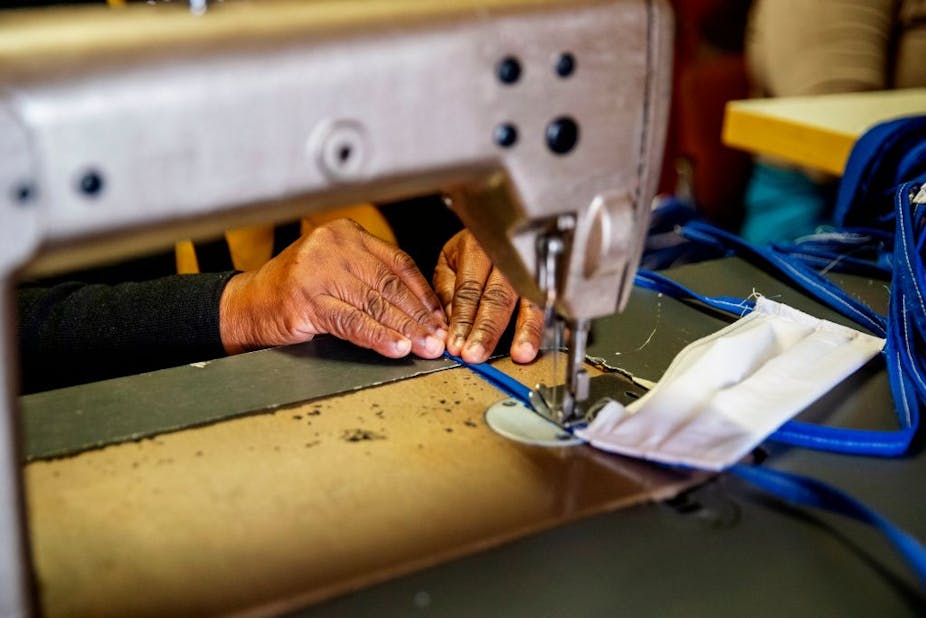Ten days after South Africa reported its first case of COVID-19 on 5 March 2020, the government moved quickly to declare a national state of disaster. Within days a National Coronavirus Command Council had been formed, travel restrictions imposed and schools closed. A national lockdown was announced on 23 March. This remains in force though restrictions are being lifted slowly.
South Africa’s response has been praised by the head of the World Health Organisation. But it has also come under intense scrutiny from those who cite major shortcomings in how the government has arrived at decisions. Specifically, it’s been criticised for whose advice it has sought and who it has chosen not to engage.
These limitations are exposed in three dimensions.
The first is the reliance on a small subset of the science community in deliberating on the response. South Africa’s Ministerial Advisory Committee on COVID-19 is dominated by medics and medical professionals.
The second dimension is the seemingly erratic policy options being communicated from different advisers. For example, some have supported the lockdown while others have been calling for it to be halted.
The third dimension is the absence of engagement with the public and civil society organisations. Here, the government could learn from one of the country’s provinces – the Northern Cape Provincial Legislature – which has gone online to strengthen public participation during COVID-19. The Democracy Works Foundation and Westminister Foundation of Development developed an online engagement series that allows communities to bring their challenges to the legislature.
Policy implementation is about the execution of political decisions, informed by evidence. But part of it is also about politics – being informed by the electorate. It is therefore important that government decision making and interventions be judged in terms of their capacity for effective problem solving. And for generating legitimacy.
Diversity of scientific expertise is needed
The economic, health and socioeconomic effects of the lockdown are multidimensional and far reaching. This suggests that advice from social scientists would be essential to inform the government response. Yet the voices of social scientists and civil society are filtering through to government opinion pieces and commentary in the print and social media – not through structured institutionalised advisory committees.
A public statement on COVID-19 recently released by the South African Academy of Sciences cautioned:
it is crucial that the National Coronavirus Command Council, and the structures reporting to it, such as the Ministerial Advisory Committee on COVID-19, include in its advisory bodies scientists from a much broader range of disciplines. While it is important to have epidemiologists, vaccinologists and infectious disease experts on these bodies, we believe that the pandemic is not simply a medical problem but a social problem as well. This means that social scientists and humanities scholars should also form part of these advisory structures.
Yet this isn’t happening.
Read more: South Africa needs a post-lockdown strategy that emulates South Korea
Even the advice from scientists who have formally been drawn into the process of advising government has its limitations.
Scientists on the ministerial advisory committee typically frame the issue based on their involvements and expertise.
What South Africa needs now is scientists to move from being issues advocates who seek to reduce the scope of available choices. They need to become what political scientist Roger A. Pielke refers to as honest brokers of policy alternatives.
This would involve scientists engaging in decision making and integrating scientific knowledge with stakeholder concerns, thus embracing the politics of expert advice. These stakeholder concerns would include business, labour, women’s organisations, religious organisations, professional societies and civic groups.
Legitimacy
The government has recently moved from a strict lockdown to a differential risk-adjusted model of alert levels.
The five risk-adjusted levels are guided by a set of criteria. These include the level of infections and rate of transmission, the capacity of health facilities, the implementation of public health interventions and economic and social impact. Built into the model is the possibility of a differentiated approach to deal with those areas that have far higher levels of infection and transmission. Decision makers in the Department of Health say they are currently implementing what is practical and implementable. This, it’s envisaged, would be done in a way that’s “coherent and aligned to many factors”.
The question is: why are ordinary citizens not involved in decisions about what is practical and implementable, coherent and aligned?

